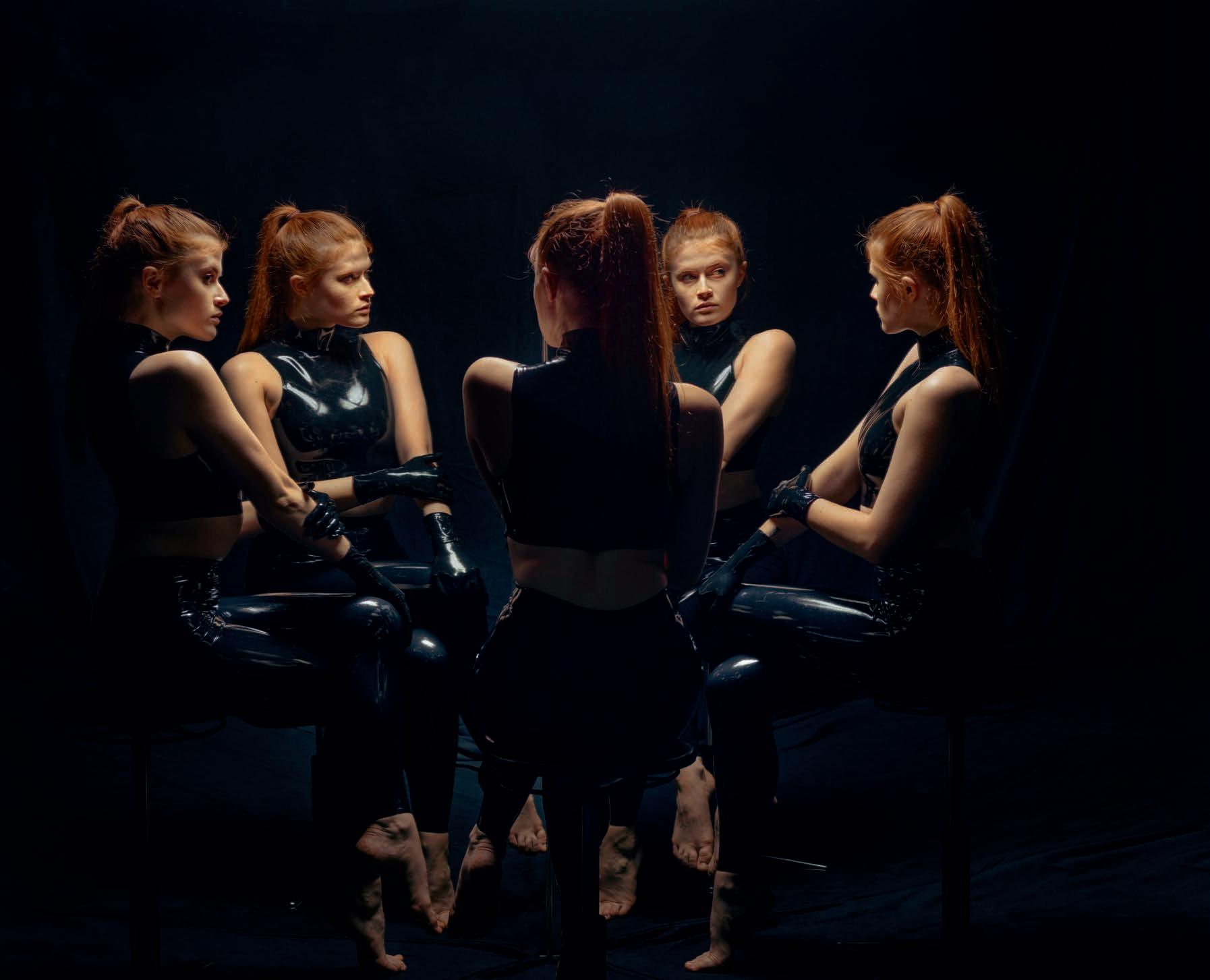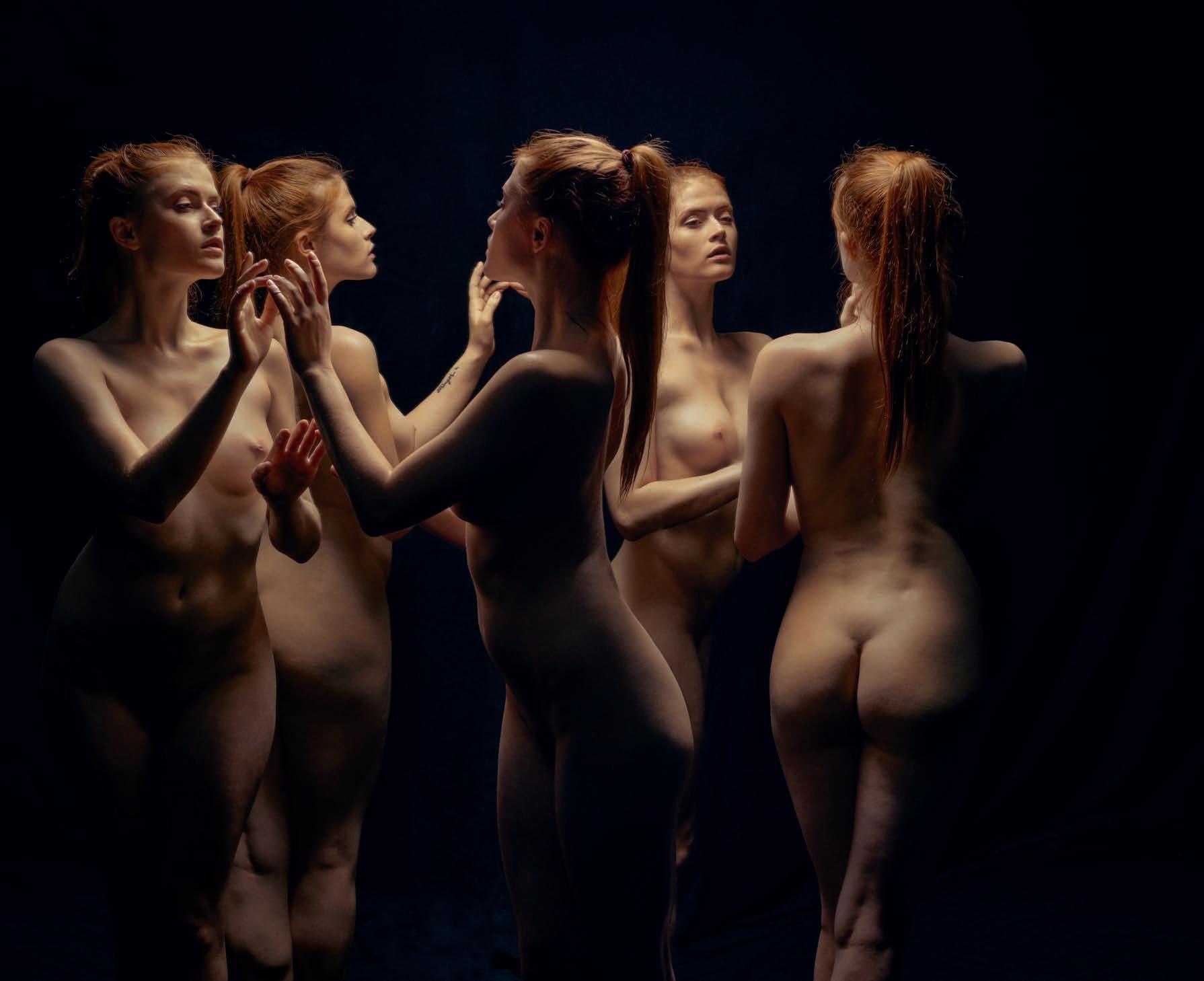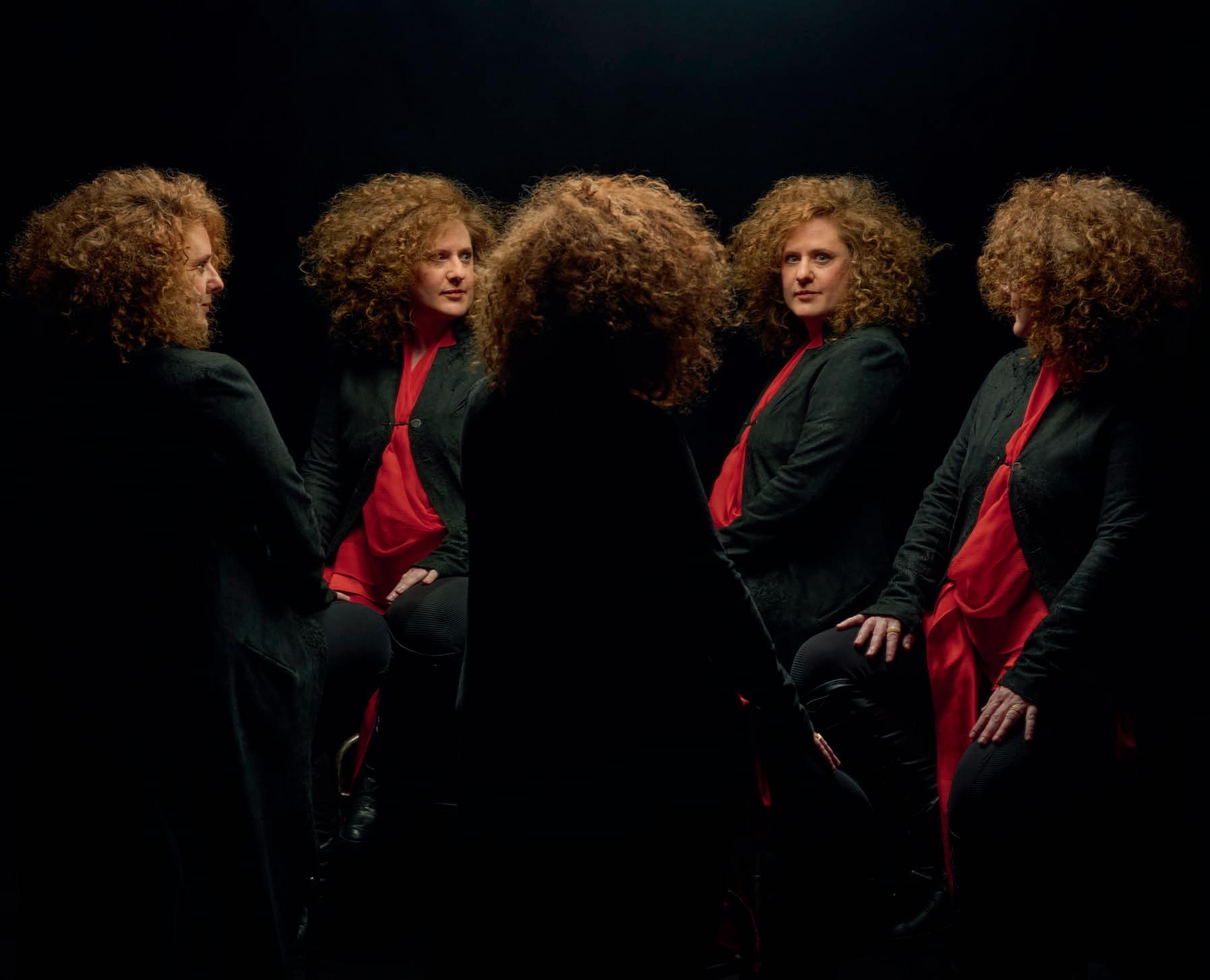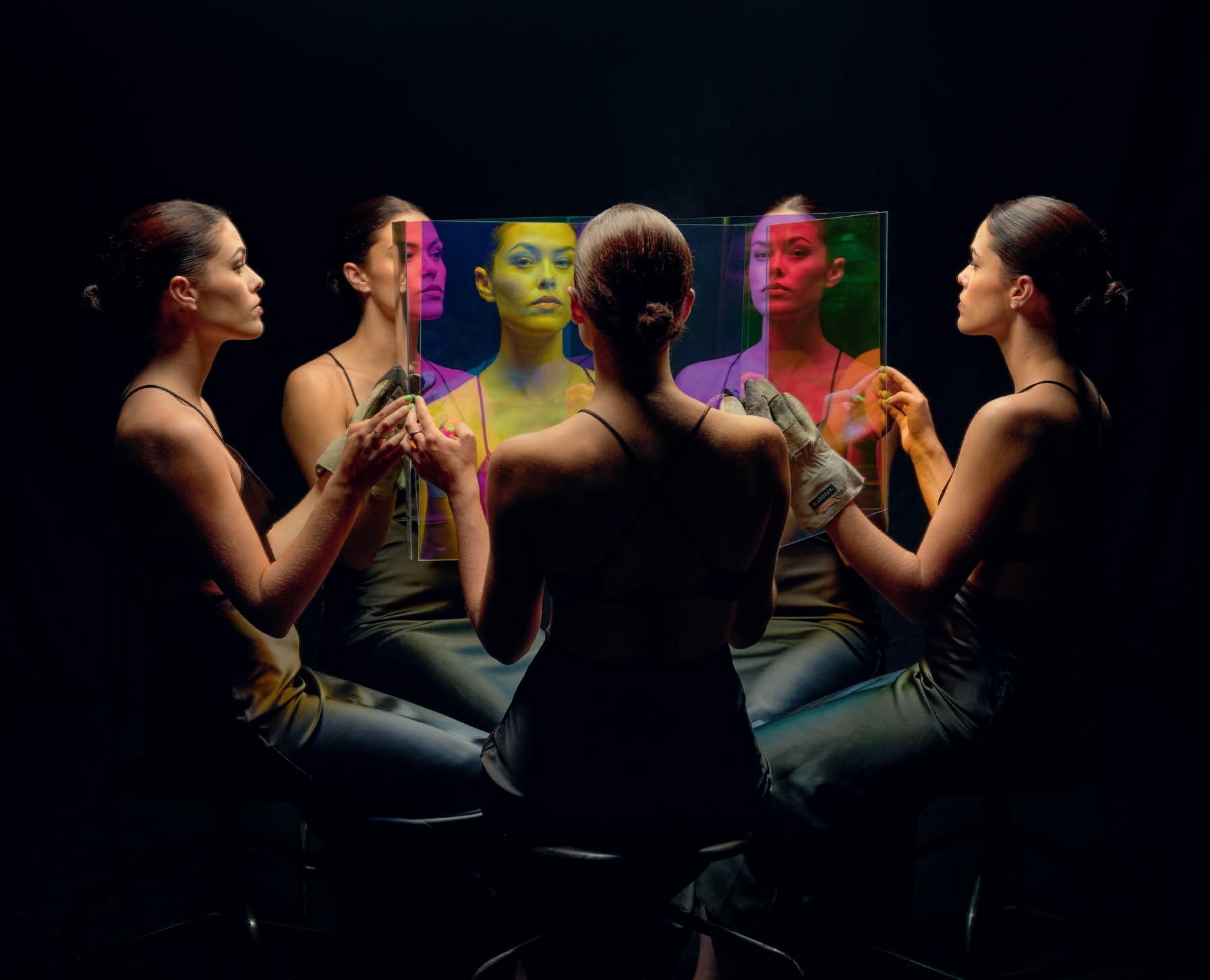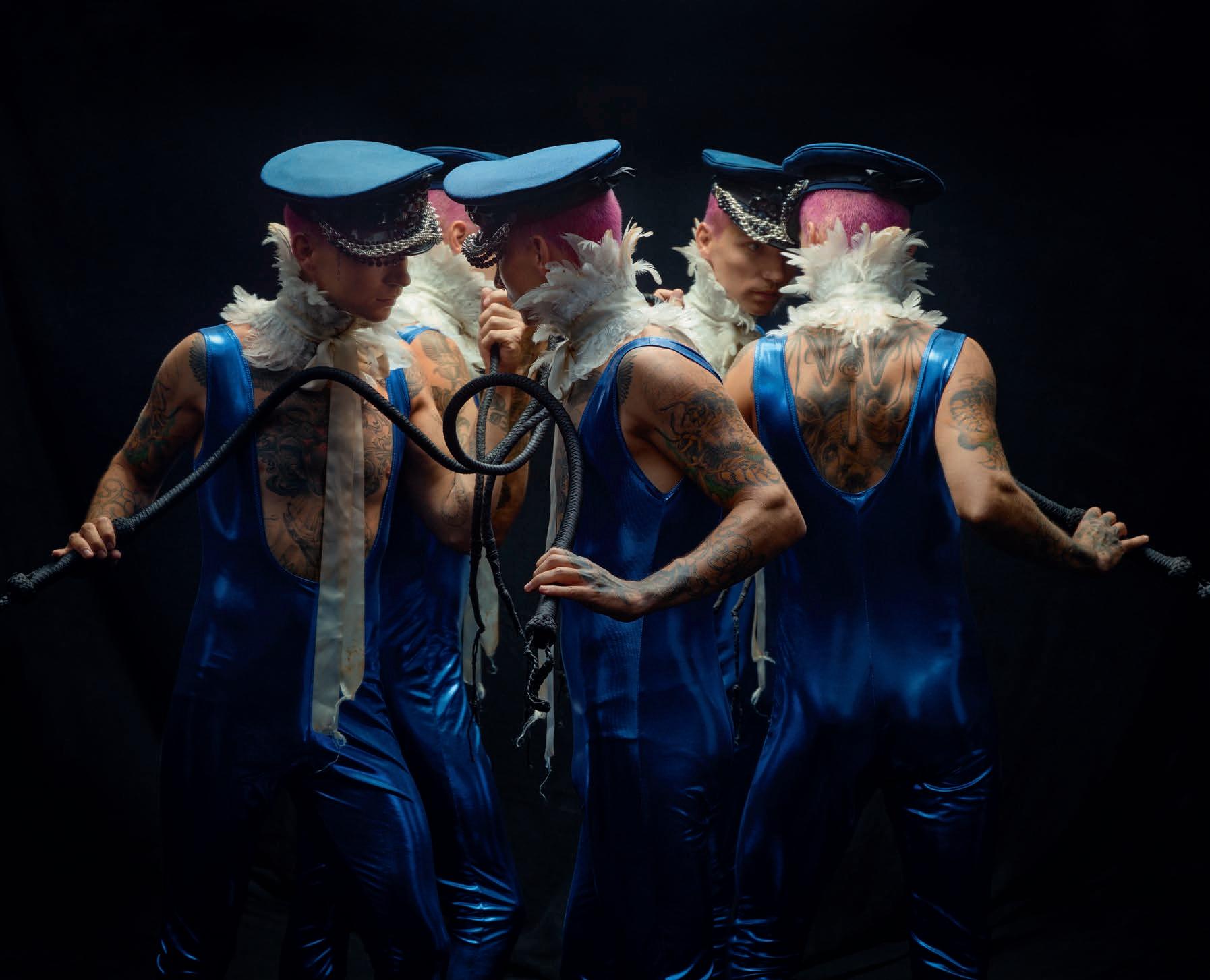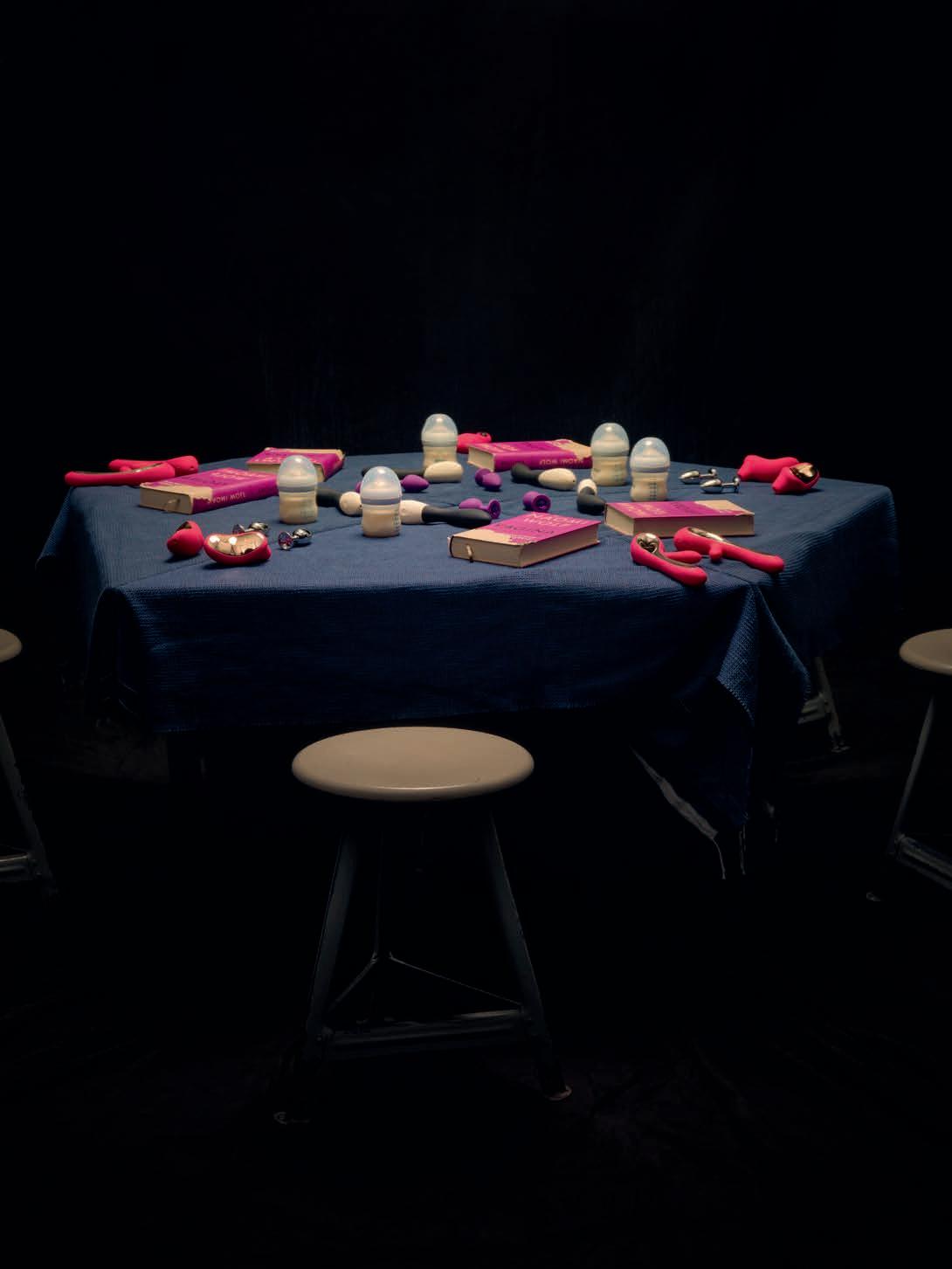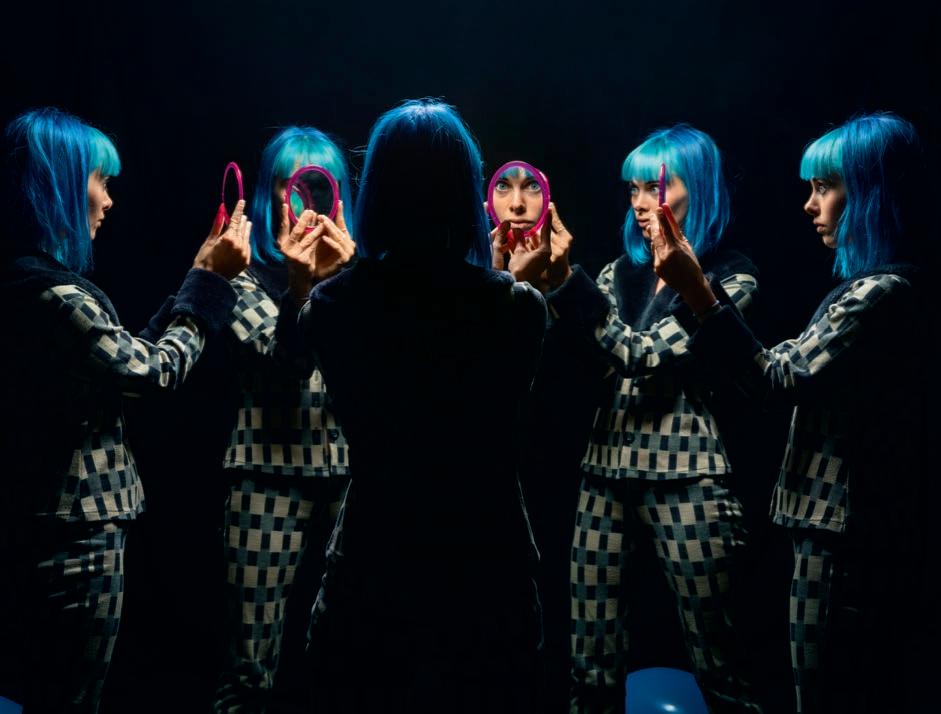
For a while now I have been revisiting a portrait of the Danish artist Anne Marie Carl Nielsen. The photograph is around a hundred years old and shows the artist placed at a table in front of two angled mirrors with her back to the viewer. As she is multiplied into five through the reflections, a meeting around the table emerges. She sits in a closed circle with herself, eyes pinched and a stern look. This is an example of a so-called photo-multigraph in which the sitter is placed between two mirrors angled in a specific way, so that four reflections of the subject are made, captured in one unique image. It is a technique invented in the 1890s as a brand-new way of making portraits. In the first decades of the 20th century, the technique became widespread in North America and Europe as a popular and entertaining attraction at the seaside, in arcades and boardwalk studios before the interest waned during in the 1950s.
In his series Conversations with My Other Me, the Berlin-based Danish photographer René Riis has revived the old technique in vibrant and experimental colour portraits of a wide-ranging group of people including chefs, dancers and actors. His interest in this type of multi-perspectival portrait was awakened many years ago when he was looking through a book by Danish photographer Rigmor Mydtskov. But it was when Riis was asked to do a portrait that showed a person from di erent perspectives some years ago that a curiosity to explore this technique of the multigraph was sparked. He built a mirror cabinet and for the past six years, has been making portraits of people in an impossible conversation or meeting with themselves. Rene Riis works as a commercial photographer in the field of gastronomy, commissioned portraits and photographs for food books. This book is di erent as it is part of Riis’ artistic and personal practice. The portraits on the following pages are a result of an artistic and playful exploration of the expressive potentials in the old technique in collaboration with the portrayed.
The multigraph is also called a trick mirror photograph. It is a trick that puzzles and shakes our perception and expectation of a photographic portrait. In line with the playful use of photobooths among artists, the multigraph technique has also been used by artists, especially by the avant-garde in the 1920s. Well-known is for example the multigraphs of Frances Picabia and Marcel Duchamp. In 1917 Duchamp had his portrait done in a Broadway Photoshop using the multigraph method: the portrait shows him sitting at a table with a pipe in his mouth. In this and other
multigraph portraits it looks as if the person is interacting with him or her self, and “yet the nature of the trick photography denies the possibility of eye contact among the various selves” as Paul Auster writes on a multigraph of his father in his memoir Portrait of an Invisible Man from 1982. This e ect is both fascinating and unsettling.
Photographic portraits usually fix the subject in a given posture in one moment in time. The mirror cabinet represents an imaginary space, a moment in time, which is only possible in the image. At first glance, you might think it is manipulated digitally as a combination of di erent takes. But as you look closer it becomes clear, that it is the same facial expression and posture just seen from di erent angles. The image that reveals itself in the multigraph is unpredictable – the motive only becomes visible in the image. At the same time the mirrors set the frame and, in some ways, dictate what movement and posture is possible. It seems that Riis’ portraits aim less at describing and capturing the individual personality than capturing the persons performing an imaginary conversation with themselves five-fold. Traditionally the multigraphs are of a person sitting still with the back to the onlooker, gazing into the mirror. But Riis experiments with the format and the posing; where the gaze is pointed for instance, or how movement underlines the kaleidoscopic e ect, when dancers make a sculptural posture with their body. You want to look at these portraits many times. Each time to discover something new and scrutinise the small details in the gesture of a hand, a wrinkle around the mouth, a fold in the clothes. The portraits play with both facial and bodily expression: like a portrait that captures a wild energy from a woman in a strong green-colored dress and hat caught in a jump or a man who throws playing cards looking at them frozen in midair. In this sense, Riis has reinvented and renewed the multigraph into a new aesthetic in his imaginative and performative conversations, but keeping the old technique’s e ect of both tremor and wonder.
Inger Ellekilde Bonde Photo-historian, Ph.D
